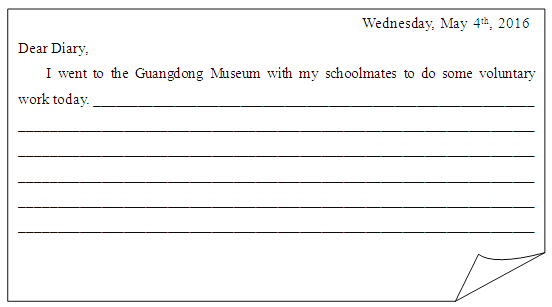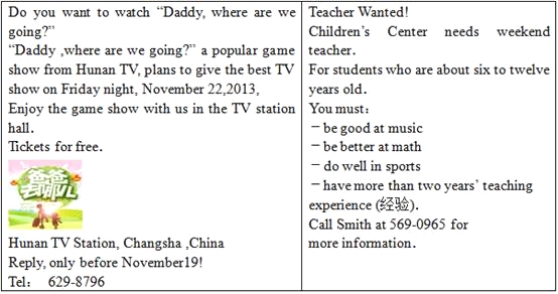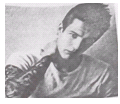题目内容
【题目】五四青年节那天,你参加了学校组织的志愿者活动。你的英语老师要求你写一则英文日志,包括以下要点:
1. 时间:2016年5月4日
2. 地点:广东博物馆
3. 内容:
七年级学生:当导游,带参观者到不同展馆
八年级学生:表演短剧,介绍广州历史
九年级学生:制作海报,帮助人们了解岭南文化
4. 意义(活动对你个人和社会的意义)
注意:1. 参考词汇:展馆(display room)、海报(poster);
2. 词数:80词左右(日记的开头已给出,不计入词数);
3. 不得透露学校、姓名等任何个人信息,否则不予评分。

【答案】
Wednesday, May 4th, 2016
Dear diary,
I went to the Guangdong Museum with my schoolmates to do some voluntary work today.Students from three grades took part in it and worked as different roles. Students of Grade Sevenworked as guides who took visitors to different rooms. And those of Grade Eight played a short opera, introducing Guangzhou history to tourists. As for students of Grade Nine, they madebeautiful posters which helped people know Lingnan Culture better.
In my opinion, it is of great help to hold such activities. On one hand, it is a good chance forus students to develop a sense of responsibility as well as our work ability. On the other hand, thehistory and culture can be passed on from one generation to another.
【解析】
试题分析:本篇是文化类提纲作文,主题是志愿者活动。这个话题学生比较熟悉,在八年级下册Unit1已经出现。全文的要点包括活动内容和活动意义。其中,活动内容已经给出详细的文字提示,学生需要做好内容翻译。相较之下,活动意义没有直接提示,学生需要对志愿者活动有一定的认识,且需要自行组织语言,难度较大。此外,全文需要用到两种时态,活动内容采用一般过去时,而活动意义则采用一般现在时。
写作亮点:短文用了一些短语和句式,如:Students from three grades took part in it and worked as different roles. And those of Grade Eight played a short opera, introducing Guangzhou history to tourists. On one hand, it is a good chance forus students to develop a sense of responsibility as well as our work ability. On the other hand, thehistory and culture can be passed on from one generation to another.用了一些过渡词,如:In my opinion,On one hand,On the other hand,使文章衔接自然,还用了非谓语动词introducing Guangzhou history to tourists.增加了文章的亮点。

 阅读快车系列答案
阅读快车系列答案【题目】
| This is me. My name is Jane. I am 12. I like red and white. Look! I’m wearing a white dress. I like flowers. |
| This is my friend, Linda. She is a beautiful girl. She is 11. She likes yellow and she doesn’t like black. Her favourite clothes are dresses. She likes to play sports. |
| This is my friend, too. His name is Dale Brown. He’s in India. He is 10. He likes red and blue very much. He often wears red T-shirts and blue pants. |
| This is a photo of Huang Li. She is my cousin. She’s 12. She is in Tibet. She looks funny in the hat. |
【1】Jane and Dale Brown both(两者都)like .
A. red B. black C. white D. yellow
【2】How many children are 12 years old?
A. One B. Two C. Three D. Four
【3】Who is in Tibet?
A. Linda B. Jane C. Dale Brown D. Huang Li
【4】Which of the following is Right(下列哪项是正确的)?
A. Jane likes to wear skirts. B. Linda likes to play sports.
C. Huang Li is Jane’s friends. D. Dale Brown often wears red pants.









